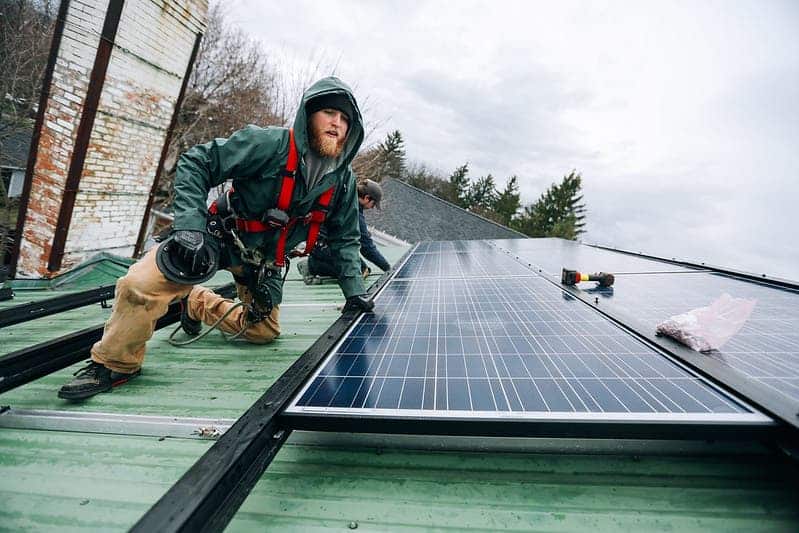Let’s face it: climate action has not been moving as fast as needed to make a sustainable change. But there is one sector that’s doing its share to help lower greenhouse gas emissions: renewable energy. Recently, renewables may be getting some unexpected help from a particular virus.
As the coronavirus is potentially killing numerous industries, it may be indirectly helping renewables.

The coronavirus epidemic has meant many workers have to stay at home due to government lockdowns. While this might slow down the fast expansion of renewables, the overall positive trajectory shouldn’t be altered, experts agree. Furthermore, renewables seem to be less affected than fossil fuels, which means that relatively speaking, renewables may be doing better over the course of the pandemic.
Solar and wind power are now the cheapest sources of energy for two-thirds of the world, challenging the polluting fossil fuels, according to a report by BloombertNEF — with the cost for both energies declining on the second-half of 2019.
Worldwide, the average cost of electricity for onshore wind projects has fallen 9% to $44 per megawatt-hour last year, while solar power decreased 4% to $50 per megawatt-hour. Equipment costs have dropped, technologies have improved, and governments around the world have increased clean energy targets in their fight against climate change.
Prices are even lower places such as China and Brazil. Onshore wind saw last year its most significant drop on prices since 2015, the report argued, mainly thanks to an increase in the size of the turbines. Brazil’s wind projects were the cheapest in the world at $24, while the same happened in China with solar – at $38 per MWh. The US
Tifenn Brandily, lead author of the report at BNEF, commented: “There have been dramatic improvements in the cost-competitiveness of solar and wind. Part of it is due to photovoltaic and wind technology getting better at extracting renewable resources.”
Despite the record-low prices, the impact of the coronavirus epidemic on the prices of coal and oil could affect how competitive solar and wind energy can be. Sen Henbest, the chief economist at BNEF, said that if the trend continues fossil fuels might be “further protected” from the expansion of renewables.
In another report, the International Energy Agency (EIA) said so far this year renewable energy has been the “most resilient” energy source to coronavirus. Nevertheless, the pace of its growth could be altered due to lockdowns and supply chain disruptions, the EIA said.
Global energy demand has dropped 3.8% in the first quarter of the year but renewable energy demand increased by 1.5%, according to the EIA – driven by new projects that became operational over the past year. Meanwhile, global coal demand dropped 8%, influenced by the shutdown of industries in China.
The EIA estimates global consumption of renewable energy will rise 1% this year, while renewable electricity generation could growth 5%. Both are lower growth rates due to the coronavirus pandemic.
“Only renewables are holding up during the previously unheard-of slump in electricity use,” said Fatih Birol, the IEA’s executive director. “It is still too early to determine the longer-term impacts, but the energy industry that emerges from this crisis will be significantly different from the one that came before.”
However, we shouldn’t let the fact that renewables are becoming cheaper slow our resolve to transition to sustainable energy sources.


